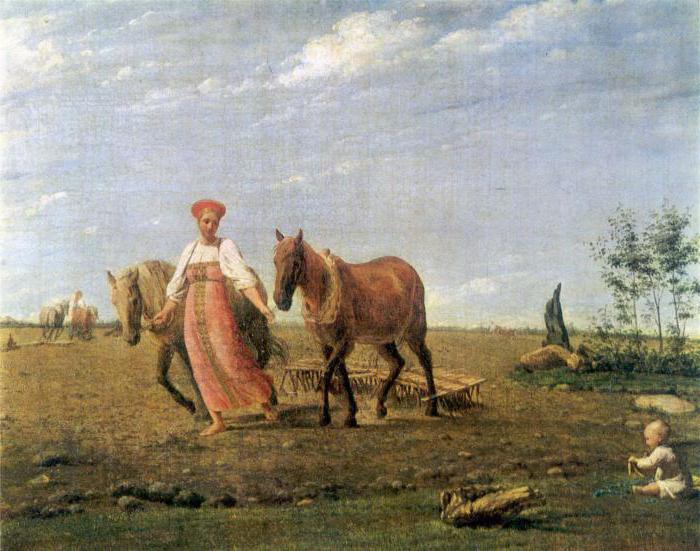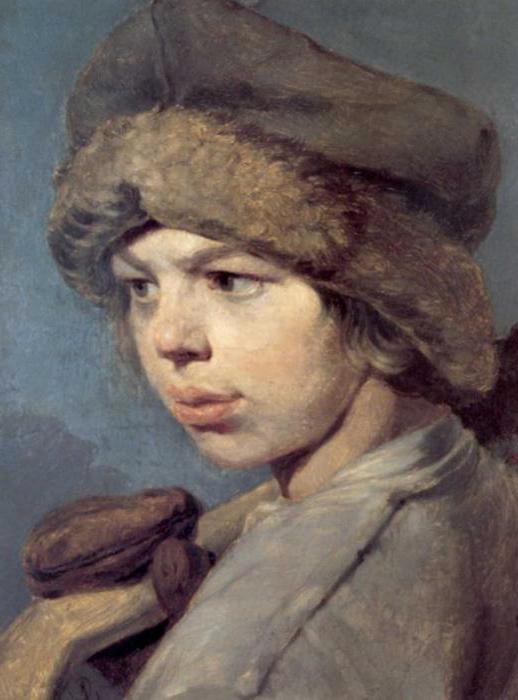How is the work of a Russian artist with the sonorous name of the Venetians most often defined? The paintings depicting genre scenes from peasant life are called the beginning of the domestic everyday genre in painting, the phenomenon that will eventually reach its peak in the era of the Wanderers.
But the size of the artistic talent of Venetsianov, the scale of his human personality had a huge impact on the development of Russian fine art, not only within the framework of one genre trend. This becomes especially noticeable with a careful look at his paintings.
“Portrait of a Mother” (1802)
Alexey Gavrilovich Venetsianov was born in 1780 in a Moscow merchant family, which had ancestors of immigrants from Greece. They received the nickname Veneziano in Russia, later converted into a Russian surname into a surname. When Alex became interested in drawing, his classes did not seem to be something for serious parents. Perhaps that is why he did not receive a regular art education. It is believed that he received the first knowledge of the painting technique from the “uncle” - the educator, and the main source of art education that the Venetians received was the paintings of old masters in museums and the works of contemporary painters in salons and galleries.
The main genre in Russian painting of that time was portraiture, which is why Venetsianov’s first known painting experience belongs to this genre. This is a portrait of his mother - Anna Lukinichna, in the nee Kalashnikova.
It is noticeable that the twenty-two-year-old youth is still lacking in pictorial skill, how difficult it is for him to transmit volume, air and light. But another thing is also visible - his ability to transmit different textures of the fabric, sufficient confidence in the pattern. And most importantly - he managed to convey the feelings of his model: some embarrassment and tension of the mother from her unusual role and his tender attitude towards her.
Self Portrait (1811)
After 1802, Venetsianov moved to St. Petersburg, where he was trying to make a name for himself and start using his paintings to earn a living. Soon he was forced to enter the service as a small official in the post office. A happy accident allowed him to meet the famous portrait painter V.L. Borovikovsky (1757-1825), who praised Venetsianov's paintings and became his mentor both in the profession and in life. Perhaps, thanks to his influence, the Venetians filed a petition with the Academy of Arts for the official title of painter. According to the charter of the Academy, the applicant had to submit his work. To this end, Venetsianov writes a self-portrait.
In this picture, a high level of technical skill of the artist is already visible. This is an accurate and true work of a real realist, devoid of romantic plaque and embellishment. The psychological depth of the image created by the artist was also highly appreciated. Here and attentive focus on work, and clearly felt self-esteem.
Venetsianov was determined by the Council of the Academy of Arts to be “appointed” - one of the formal qualifications of the artist, which made it possible to obtain the title of academician after completing the assignment appointed by the Council. Venetsianov becomes an academician after writing a given portrait of K.I. Golovachevsky.
Threshing Floor (1821)
Soon after receiving the title of academician of painting, the Venetians unexpectedly left the capital and the service and settled in his estate Safonkovo in the Tver province. Here he creates his most significant works on the poetization of peasant life.
Before starting work on the painting “Threshing Floor”, the artist ordered his serfs to dismantle the front wall in a large barn, where grain was stored. He set himself the task of conveying a linear perspective and depth, similar to those that struck him in the paintings of the French painter Francois Granet. In addition to the image of the room that goes into the distance, which is surprising for that time, the carefully verified composition of the figures of peasants and animals frozen in various poses impresses. They are full of ancient significance and amazing poetry.
The painting was highly appreciated by Emperor Alexander I, who bought it from the artist, and also presented the author with a diamond ring. This slightly eased his financial situation.
“On arable land. Spring "(1820s)
Many of the paintings by Alexei Gavrilovich Venetsianov are full of secrets and mysteries that are still not subject to professionals and art lovers. Such is a small canvas (65 x 51 cm) with an almost Botticellian name and poetic sound, commensurate with the greatest masterpieces of the Renaissance. It is believed that this picture is part of a cycle dedicated to the seasons.

The scene of peasant labor appears as an action full of sacred, cosmic meaning. The figure of a young woman who went out to hard work, wearing her best outfits, a child on the edge of the field, making the plot look like an icon of the Virgin, a mirror-like figure of another peasant woman leaving in the depths - everything is full of mysteries. The landscape is full of significance and great simplicity, against the background of which these ordinary and at the same time majestic events take place. Alexei Venetsianov, whose paintings are difficult to attribute to a particular genre, is considered one of the founders of the Russian poetic landscape.
The Reapers (1820s)
But the main genre for Venetsianov remains a portrait, and the main task that he solves is the expression of genuine interest and respect for those whom he portrays. High pictorial craftsmanship combined with laconicism and sophistication of composition enhances the impression that the Venetians have on the viewer. The paintings, the description of the contents of which can fit into several phrases, amaze with depth and versatility, even if their heroes are simple peasants.
Two butterflies crouched on the reaper’s arm, stopping for a moment to rest. Over his shoulder, a boy is looking at them, mesmerized by their beauty. The artist wrote almost a trick - it seems that now the light wings will flutter and disappear in the summer heat. The main characters are just as real - their faces, hands, clothes. The feelings expressed by a young woman and a child also seem real, and most importantly - you can feel tangibly how Venetsianov admires them.
"Morning of the landowner" (1823)
The role of Venetsianov as the founder of genre diversity in Russian painting is undeniable. One of the first he tried to pay attention to the special beauty of Russian nature, paving the way for future genius landscape painters - Levitan, Shishkin, Kuindzhi, Savrasov. In the portrait he showed completely unusual main characters - people from the people. But the poetry of the domestic genre was a particularly innovative phenomenon.
It is believed that the master made his wife, Marfa Afanasyevna, and her serf girls the heroines of his painting. This explains the warm feeling that pervades this canvas. There is no confrontation between the hostess and her forced servants - this is more like a family scene in which the girls have their own dignity and calm beauty. The environment plays an equally important role in the picture: a lovingly written filling of the interior and - which is especially striking - a soft, but still filling light.
Zaharka (1825)
Peasant children are frequent characters in portraits and genre paintings painted by the Venetians. The paintings “The Sleeping Cowgirl”, “Those and the Father’s Dinner”, “Cowgirl with a Horn” depict children as incorporeous cherubs from icons and classic canvases - these are full-fledged heroes with their own character, experiencing strong emotions, which are part of the harmony of our world. Such is Zakharka - the protagonist of the picture of Venetsianov. With the names and descriptions of such works by the artist, his vocation as a teacher, which left its mark in Russian painting, becomes clear.

He thought about the fate of talented children born of serfs when he saw a yard boy trying to portray something with chalk on a blackboard. Soon from this was born the "school of Venetsianov." In addition to teaching the artist’s profession, he gave shelter to peasant children, fed and watered them, and tried to redeem many of them. Among the students of Venetsianov is the ingenious Grigory Soroka and about 70 artists, many of whom graduated from the capital's Academy of Arts. The school's activity proceeded in the face of opposition from official academics who did not award Venetsianov the title of teacher of painting.
“On the harvest. Summer ”(182?)
His life can not be called carefree, it has always been filled with labor and troubles. Its end was tragic and unexpected - Alexey Gavrilovich died in 1847, when the horses harnessed to his wagon suddenly got scared and suffered, and trying to stop them, he fell onto the road.
The man on earth, the harmony of his relationship with nature, with the whole world around him is the main theme of the artist Venetsianov, the main essence and value of his heritage, that’s why his name is revered by connoisseurs and lovers of Russian painting. A painting depicting a reaper against the backdrop of a recognizable Russian landscape, while also possessing cosmic significance, is one of the pinnacles of the work of the great Russian painter.